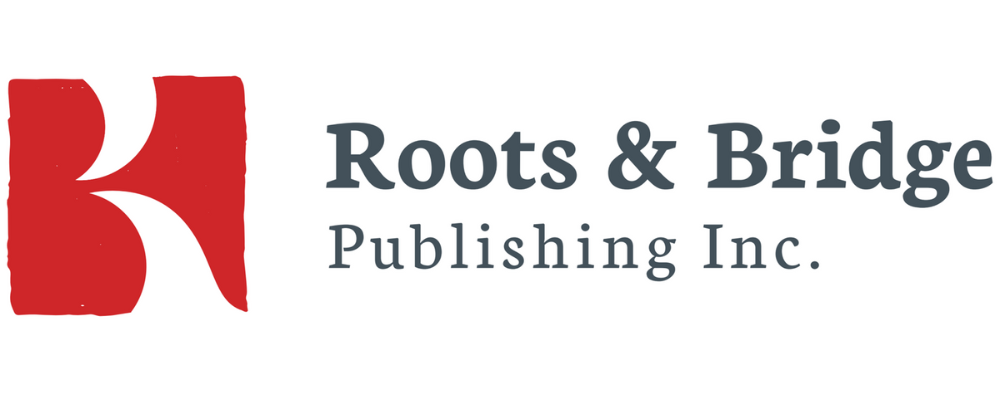This blog post continues a series where we will demonstrate how to highlight diverse book content using the Thema subject classification system. You can review our blog coverage of Thema here, and follow this series here.
It’s no secret that at BookNet we're major fans of the Thema subject classification system. While we still love BISAC, the dominant subject classification system in the North American book market, the love for Thema is real. While BISAC has made adjustments to its codelist to meet market demand for more granular coverage of diverse content, BISAC is intrinsically challenged due to its structure: its focus is to group books within a single North American market. Thema, with its qualifier lists can better handle diversity matters such as intersectionality in a way that BISAC is not capable of. Its scope allows for a nuanced approach in describing individual books and provides better support for book discovery.
Quite simply put: when used correctly, Thema can communicate more granular and specific information about a book’s content that allows data senders and data recipients to share and display information about a book that represents a more diverse and inclusive range of content ripe for discovery by a marketplace that demands it.
Thema is overseen by EDItEUR, the international standards organization that also oversees the ONIX for Books metadata standard. When we hosted EDItEUR’s Chris Saynor at Tech Forum 2020, he shared some tips and tricks to reinforce what we already knew: Thema is far better equipped to support sharing diversity information than anything yet put forth in the market.
New to Thema? Learn more about the basics here.
Thema: real life examples
In 2020, EDItEUR released a comprehensive report on how to use Thema to communicate what we’ll call “diversity” attributes about a book. This was followed by what EDItEUR refers to as “worked examples,” where EDItEUR took real books in the market and made suggestions as to what specific Thema subject categories and qualifiers could be assigned to describe the book’s content. We're republishing these examples to show how flexible and adaptive Thema is, and to illustrate the effectiveness it offers as a solution to communicate so-called “diversity” attributes about the book's content.
Note: They don't necessarily represent the actual codes chosen by the publishers, and they're meant to stimulate discussion and reflection rather than being authoritative statements of the correct way to categorize the particular books listed.
Where possible, we’ve complemented EDItEUR’s examples with Canadian titles and categorized accordingly. The same caveats apply and are worth repeating: the BookNet-selected codes don't necessarily represent the actual codes chosen by the publishers, and they're meant to stimulate discussion and reflection rather than being authoritative statements of the correct way to categorize the particular books listed.
Example: City Rising by David Rotenberg 🍁 (At Bay Press)
According to the publisher, At Bay Press, City Rising “tells the story of two destitute Baghdadi boys who become opium lords - and the battles against the powerful British Opium companies - and the boys' eventual love of the City at the Bend in the River - Shanghai.”
Let’s explore how City Rising could be categorized according to the Thema subject categorization. For this book, we have several points of references, including publisher-provided BISAC subjects and a robust book description.
Points of Reference: Publisher-provided BISAC subjects
FICTION / Historical / General
FICTION / General
Points of Reference: Publisher-provided description (emphasis added)
The first book in the Shanghai Quartet - City Rising - starts on the Hua Shan (the Holy Mountain) 250 years before Christ where the FIRST EMPEROR the most powerful man the world to that time had ever known bequeaths a talisman to his three trusted followers: the BodyGuard, his favorite Courtesan and his Head Confucian - a narwhal tusk with carvings depicting the growth for the next 2500 years of a city at the Bend in the River - Shanghai. The warning from the First Emperor before he commits suicide is to watch for the White Ships on Water - and so the progeny of the three who are entrusted with the Tusk do - and then - in 1841 - they arrive. British Men of War ships - and Opium.
City Rising tells the story of two destitute Baghdadi boys who become opium lords - and the battles against the powerful British Opium companies - and the boys' eventual love of the City at the Bend in the River - Shanghai.
We’ll use these metadata elements to go a bit further and demonstrate additional theoretical subject categorization according to the Thema subject categories hierarchy, using EDItEUR’s online Thema browser.
Theoretical subject re-categorization:
FV - Historical fiction
FXP - Narrative theme: Politics OR FXV - Narrative theme: Journeys and voyages
First, before we even start coding with Thema, we're discarding the FICTION / General BISAC in favour of the FICTION / Historical / General code. There is simply no point in providing both. FICTION / General provides no information and is of no help in the trade: it should be considered a header and never used.
So let’s use the BISAC to Thema Translator with the FICTION / Historical / General code. When we look for the Corresponding Thema Subject, we get FV - Historical fiction.
EDItEUR’s online Thema browser tells us that the FV Historical fiction code should be accompanied by Geography and/or Time Period Qualifiers to indicate setting. We'll revisit this in a moment:
Use for: stories set in the past (typically before the writer’s lifetime), where the time period is a significant or essential part of the story and that portray the spirit, manners, and social conditions of that time with realistic detail. Use with: other F* codes as appropriate and PLACE 1* and/or TIME PERIOD 3* Qualifiers to indicate setting as appropriate. Prefer: genre-specific ‘historical’ headings where available.
There's also a note that the supply chain prefers genre-specific historical headings where available:
See also: FFH Historical crime and mysteries, FJH Historical adventure fiction, FMH Historical fantasy, FRH Historical romance ✽
Of these, the closest could be FJH Historical adventure fiction, but since we're not sure if the book has a “sense of danger and is meant to give the reader a sense of excitement or adventure,” we'll stick with the ancestor FV Historical fiction code at this time.
A final suggestion to the publisher would be to review the list of Narrative Themes to help ground what the reader can expect from the book. Perhaps:
FXP - Narrative theme: Politics
Use for: fiction where political concerns are the underlying narrative theme including political allegories. Prefer: FHP for political thrillers.
FXV - Narrative theme: Journeys and voyages
Class here: road trip stories, stories about voyages of exploration and discovery, stories about quests or about wanderers. Use for: fiction where a journey, voyage or some sort of travel or trip is the main or a major narrative theme of the story.
Wrapping up, let’s support the Historical Fiction subject code with qualifiers. As instructed from EDItEUR’s online Thema browser, we're going to consider the geography and time period lists.
The geography qualifier for Shanghai, 1FPC-CN-HB, is the easy selection, given this is the first book in the “Shanghai Quartet.”
A less straightforward, but perhaps compelling, geography qualifier selection would be 1QBC, to signify “Historical states, empires, territories and regions: multi-continental.” The geography qualifier list has some political markers, and perhaps this one would be helpful to indicate the looming presence of the British Empire as suggested in the book description.
For Time Period, from the description we know the book covers a time period that ranges from between “250 years before Christ,” up to 1841. It sounds like the book jumps from one time period to the other, so we've added those two time periods here: 3CTB to denote c 500 BCE to c 1BCE and 3MNB to denote Early 19th century c 1800 to c 1850.
Finally, for Interest Age & Special Interest, we noted the main characters are from Baghdad, and have added 5PBCB - Relating to people of the Middle Eastern diasporas / heritage as a final qualifier, completing our theoretical Thema subject classification.
Accompanying qualifiers:
1FPC-CN-HB - Shanghai
1QBC - Historical states, empires, territories and regions: multi-continental
3CTB - c 500 BCE to c 1BCE
3MNB - Early 19th century c 1800 to c 1850
5PBCB - Relating to people of the Middle Eastern diasporas / heritage
Want more worked examples?
To read more examples as they are posted, subscribe to our weekly eNews or nab the RSS feed.















The Booksellers’ List is here!